This coastal L.A. hike offers ocean views, wildflowers and an exit to the beach
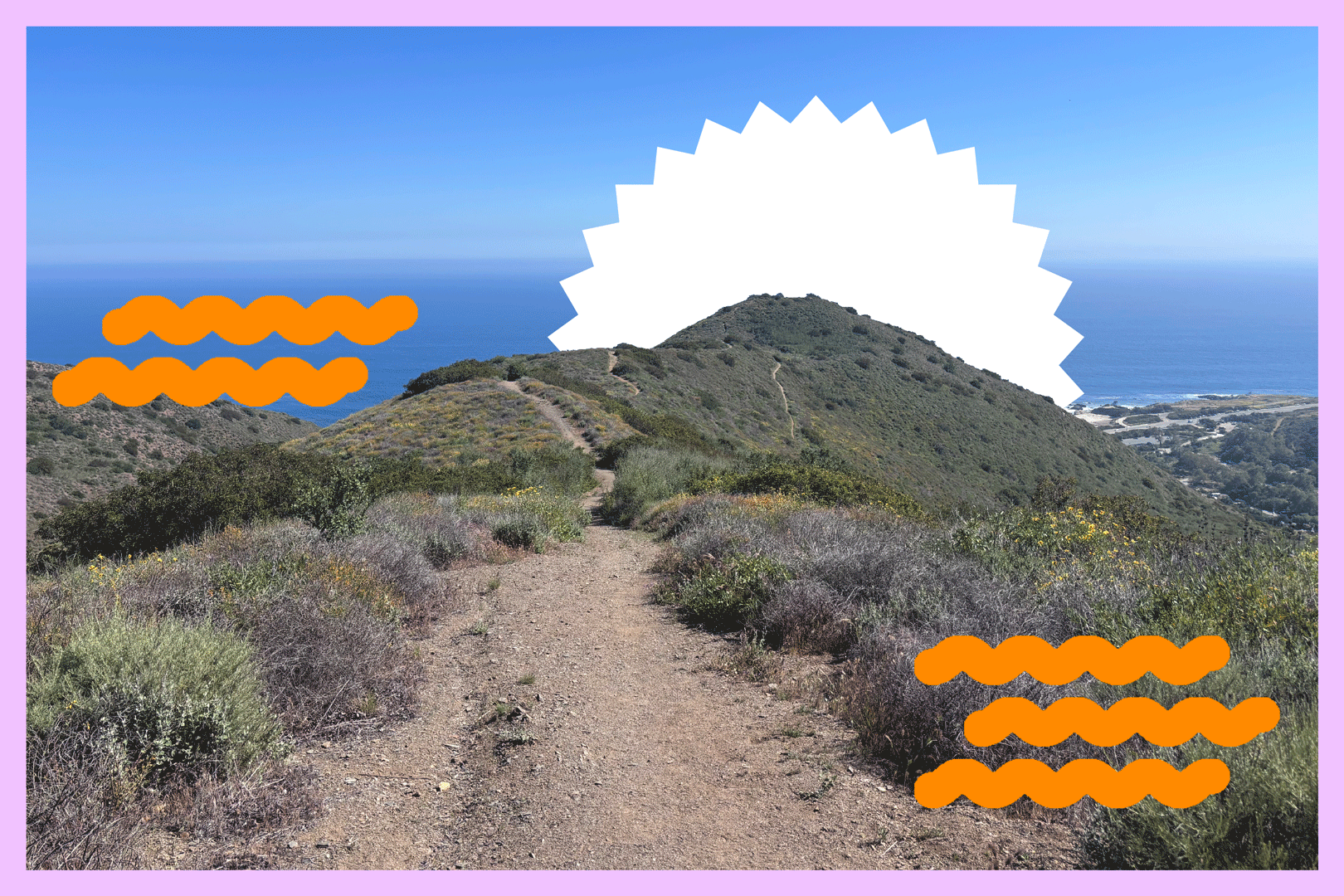
- Share via
Whenever friends or family visiting L.A. ask to go spend a day swimming in the ocean, I always take them to Leo Carrillo State Beach.
Unlike Santa Monica or Venice beaches, Leo Carrillo is not crowded. Parking is usually easy. And it’s a great place to swim and explore, with its tide pools where you can spot a starfish and scramble on its huge rocks (I may have had a goofy photo shoot or two with my friends there).
But until recently, I did not know that the adjoining Leo Carrillo State Park was home to a magnificent series of hiking trails where, when connected, provide you with a seven-mile trek with striking ocean views, wildflowers and birdsong. The halfway point is a pond and wetlands area where you can spot waterfowl and, if you’re lucky, listen to frogs! This is now the hike I take friends on when they want to both hike and have a beach day. I recommend you do the same.

You are reading The Wild newsletter
Sign up to get expert tips on the best of Southern California's beaches, trails, parks, deserts, forests and mountains in your inbox every Thursday
You may occasionally receive promotional content from the Los Angeles Times.
The hike that I took through Leo Carrillo State Park — which I would gauge as mostly moderate with a few short but hard stretches — connects a few different trails, and I will explain how you can even just do portions of it and still have a great time before heading over to the beach.
To begin, you’ll park at Leo Carrillo State Park. An all-day pass is $12, payable to the ranger at the gate or via the machine in the parking lot. Once parked, you’ll head northeast to the trailhead. You’ll quickly come to a crossroads. Take the Willow Creek Trail east to officially start your hike.

You’ll gain about 575 feet in a mile as you traverse the Willow Creek Trail. I took breaks along the way to gaze at the ocean, watching surfers bobbing on their boards and a kite surfer trying to gain traction. I spotted coast paintbrush and California brittlebush, a flowering shrub that features yellow daisy-like flowers, on the path, along with several lizards.
A mile in, you’ll come to a junction in the trail where you have three-ish options. You can continue west to a branch of the Nicholas Flat Trail that will take you a mile back down to the parking lot. You can head south onto ocean vista lookout point (which, though steep, I highly recommend). Or you can turn north onto another branch of the Nicholas Flat Trail.
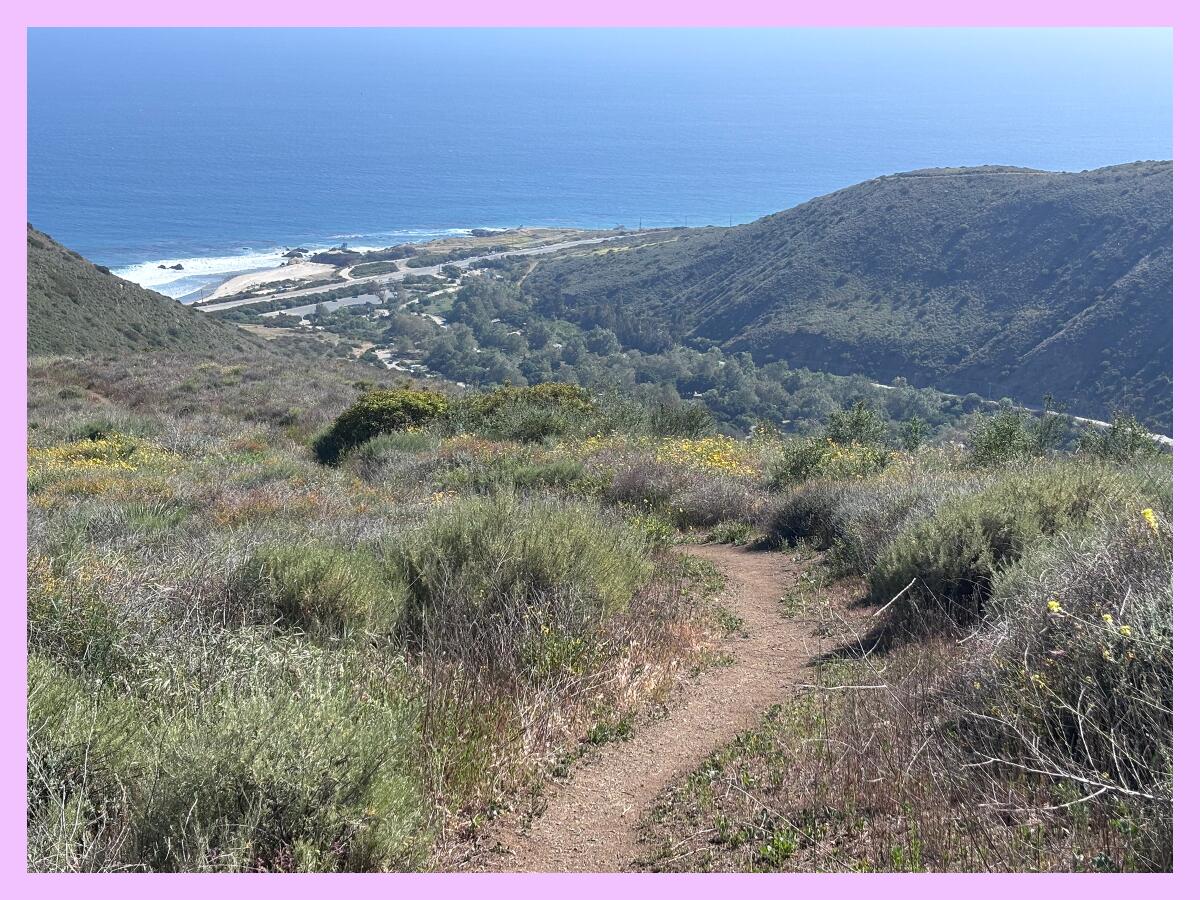
I did a combination, hiking 235 feet up the lookout path, where I had one of those “Wow, I get to live here” moments. The ocean was varying shades of blue, from turquoise to cerulean to cobalt. I could clearly see in all directions, including about eight miles to the east to Point Dume. I was, once again, amazed to be alone in a beautiful place in a county of 10 million people.
Once I finished at this awe-inspiring point, I headed north onto the Nicholas Flat Trail, taking it about 2.3 miles — and about 1,100 feet up 🥵 — through laurel sumac and other coast sage scrub vegetation into the Nicholas Flat Natural Preserve. Along the way, I observed loads of deerweed covered in its orange and yellow flowers along with scarlet bugler (which I spotted hummingbirds feeding on during my way back), Coulter’s lupine and small patches of California poppies.

If you need to catch your breath but don’t want to share that fact with your friends, just yell “Look at that view!” which is relevant for the hardest parts of the first stretch of this path, as the ocean grows only more beautiful and expansive as you climb.
About 2.5 miles in, you will see a path on your right that heads south. I’d skip this. It is a lookout point, but is washed out and looked sketchy to me. Instead, continue east-ish for another mile, and you’ll reach the charming little Nicholas Pond.
This is a great spot to sit, have a snack and observe the waterfowl and other birds, like red-winged blackbirds, song sparrows and lesser goldfinches (which are only lesser in their names). As I sat there eating my Trader Joe’s veggie sushi, I imagined decades ago when cattle probably drank from the pond, given a portion of the preserve resembles pasture and not native coastal sage scrub, and thus appears to have been used for ranching.
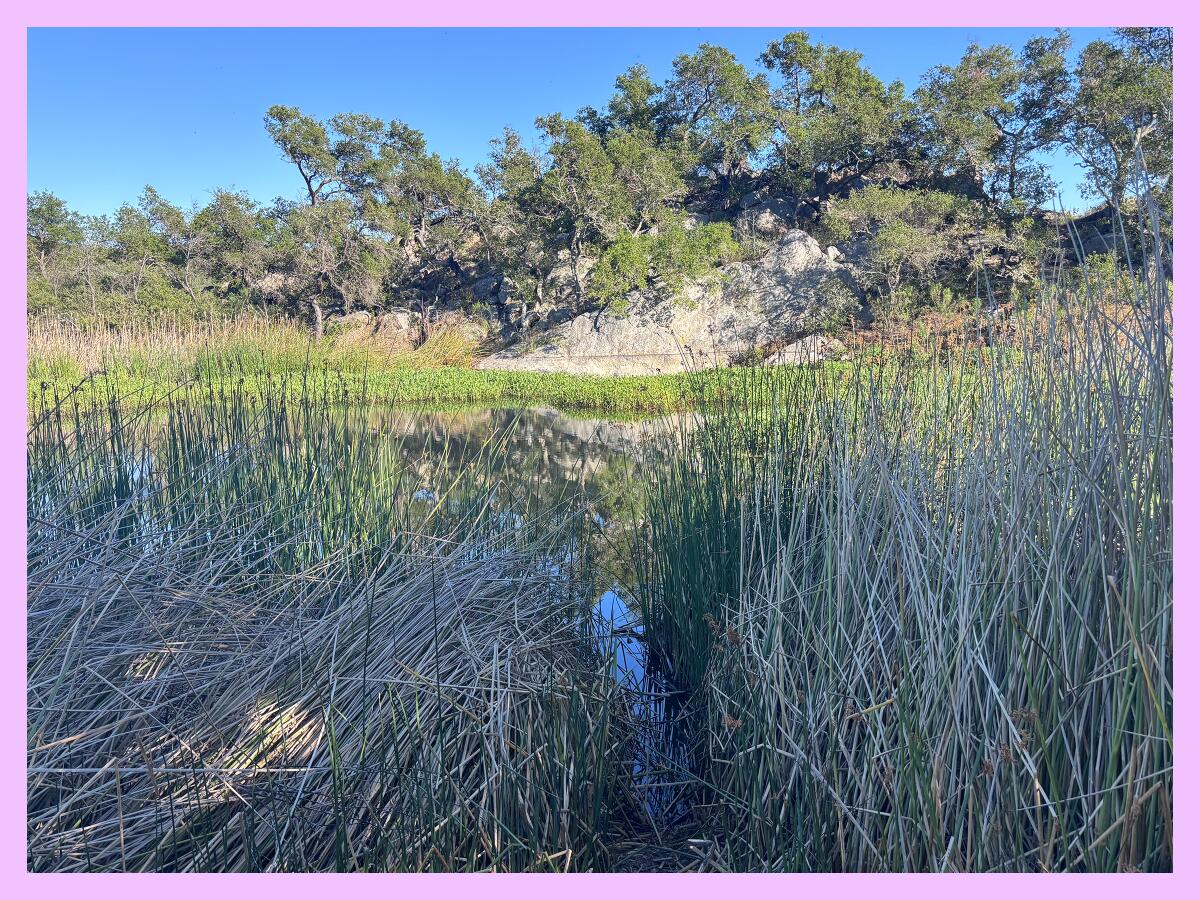
I continued north and then west on the Nicholas Flat Trail through the preserve. You could also turn around at the pond and head back the way you came.
The walk through the preserve featured views of the pasture and some shade from large oak trees, but it didn’t delight me the same as the rest of the hike. Additionally, just before finishing this leg of my hike, I noticed a steep, washed out hill and thought, “Please don’t let that be the trail.” Dear Wilder, it was. There was a nice view once I cursed my way up, but I give you permission to, again, just turn around at the pond.
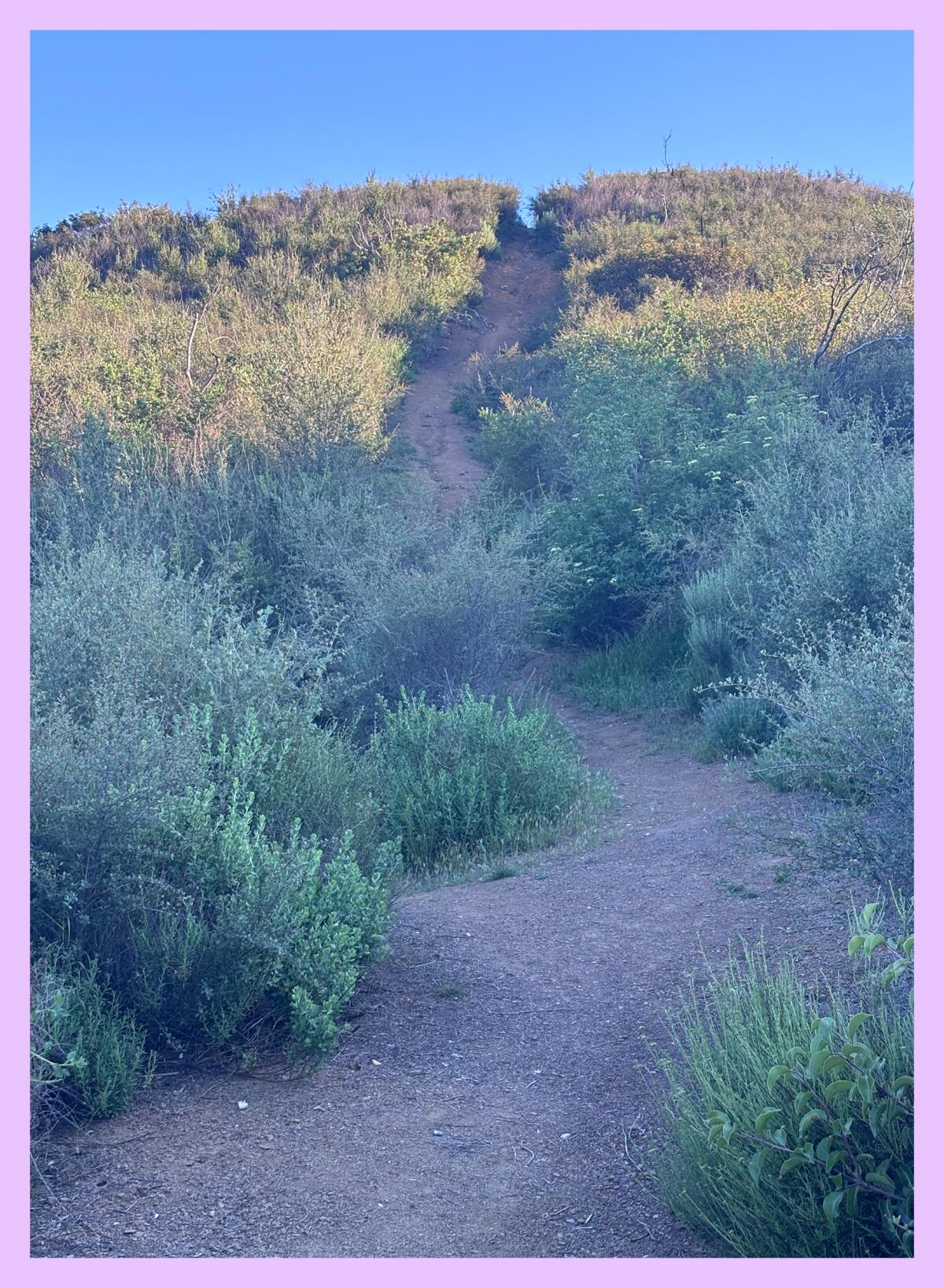
At six miles in, or when you have only a mile left, you’ll return to the junction with the ocean vista lookout point. Instead of taking the Willow Creek Trail back the way I came, I took a right (northwest-ish) onto the last bit of the Nicholas Flat Trail. This trail also offered tremendous views and had patches covered in brittlebush with its yellow blooms.
I hiked this trail on a Thursday and did not see another human for the first six miles. It was just me, the western fence lizards, California quail and one very shy skinny silver striped snake who, upon hearing my footsteps, bolted into the bushes.
If you start this hike early enough in the day, you can simply trek back to your car and change into your swimsuit for an afternoon at the beach. And if the tide is out, you might also be able to walk around the tide pools. In the same day, you can hang out with both lizards and starfish, and when lucky, even spy an endangered bumblebee on the trail and an octopus on the beach. Please, go have yourself a remarkable Southern California day!
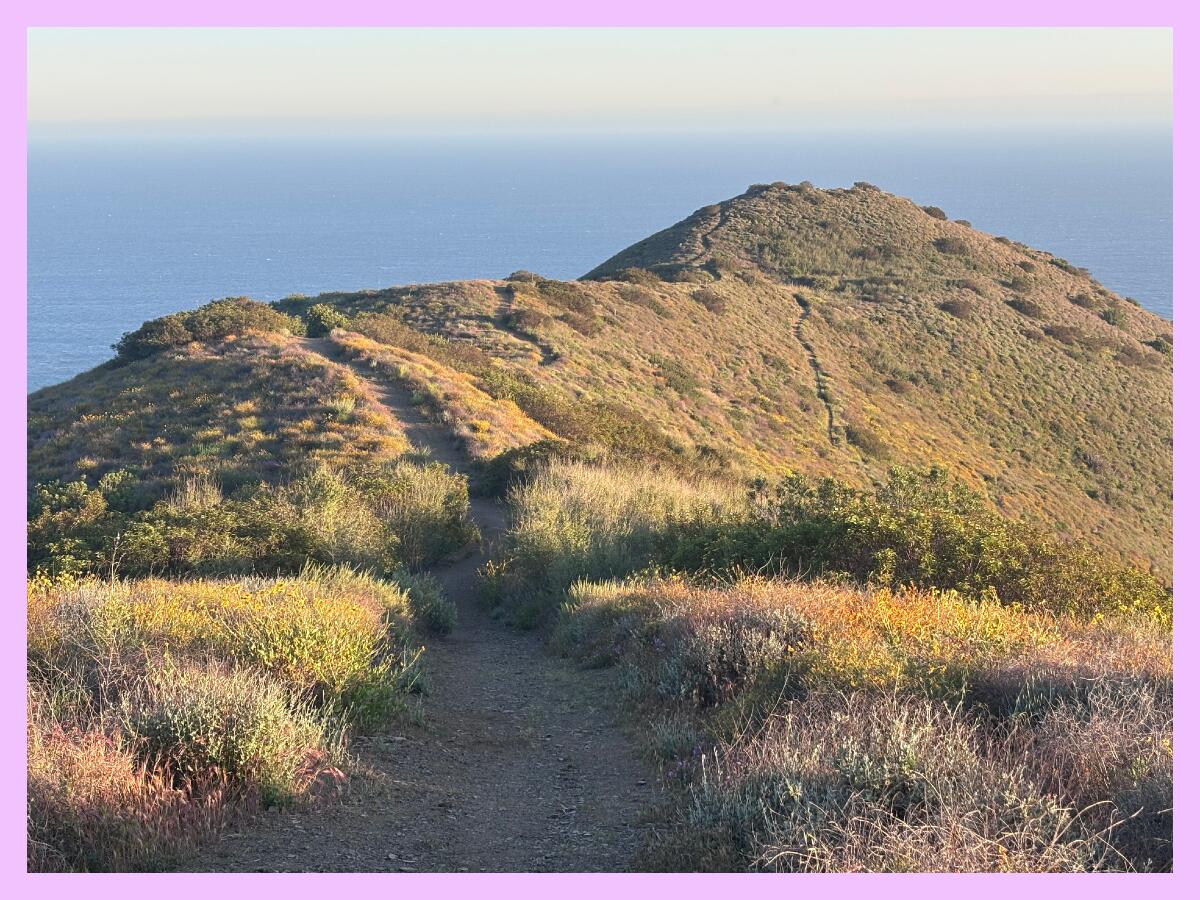

3 things to do
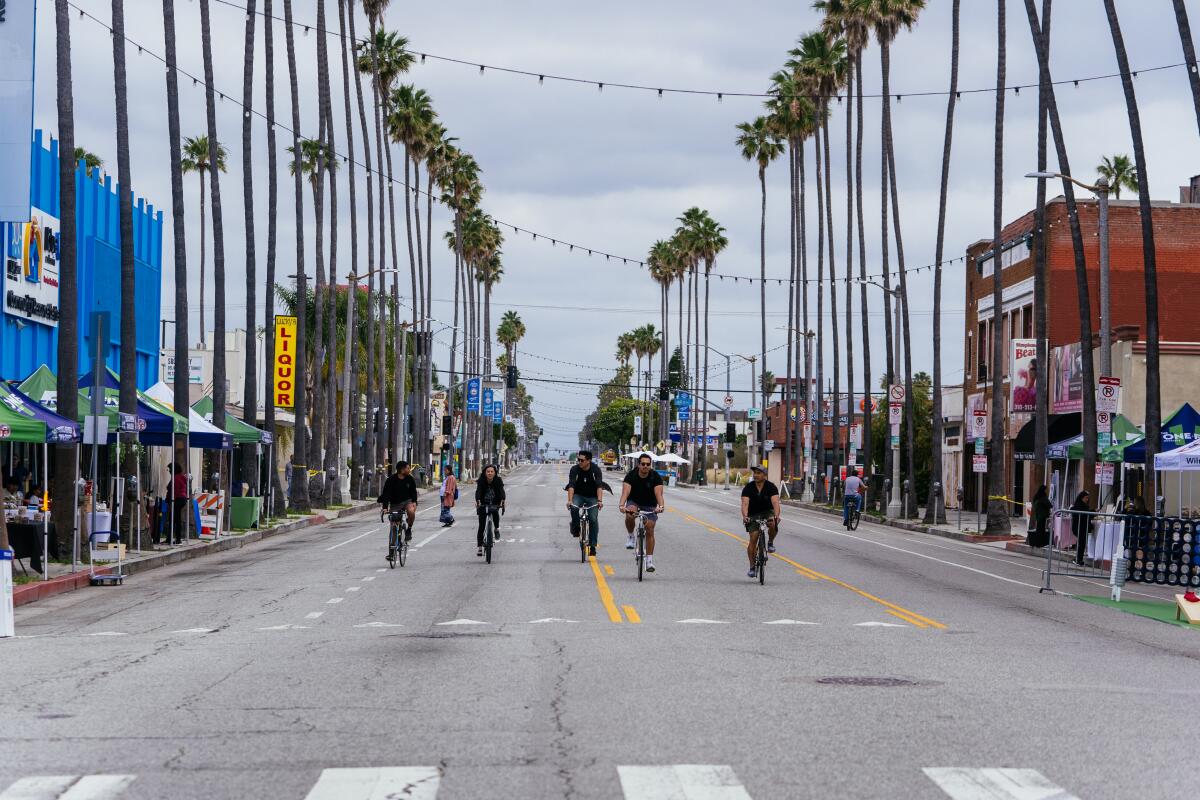
1. Pedal your heart out in Pico Union
CicLAvia will host its 60th open streets event, CicLAmini—Pico Union, from 10 a.m. to 3 p.m. Sunday in Pico Union along Pico Boulevard between Normandie and Union Avenues. Guests are invited to travel the 1.4-mile pop-up park through their favorite people-powered mode of transport, whether that’s walking, jogging, biking, skating or shimmying. The route will feature booths from nonprofit organizations and photo opportunities and food. CicLAvia, a nonprofit whose events are always free, invites participants to show up anywhere along the route during the event to take the time to explore one of L.A.’s most historic neighborhoods. Learn more at ciclavia.org.
2. Observe waterfowl and more in Castaic
An instructor-led bird walk and talk will be hosted from 8 to 10 a.m. Sunday at Castaic Lake. Guests should bring binoculars, sun protection and water, and wear comfy shoes for this relaxing stroll along paved pathways, sand and grass. Participants should meet at parking lot No. 4 and check in at the office. Register for free to this L.A. County site.
3. Fly a kite at Los Angeles State Historic Park
Clockshop, an L.A. arts and culture nonprofit, will host its fifth Community & Unity People’s Kite Festival from 2 to 6 p.m. Saturday at Los Angeles State Historic Park. This free event will feature free arts workshops, live music and booths from local community organizations. There will be a kite competition where contestants will fly their handmade kite, to be judged by kite masters. A $5 donation to Clockshop is requested but not required. Register at clockshop.org.

The must-read

Anyone who has hiked for three minutes in L.A. has spotted a western fence lizard. They’re seemingly everywhere, scampering up a hillside, along the trail or on a rock. Turns out, Californians love documenting these little guys. Sean Greene, an assistant data and graphics editor at The Times, analyzed data from the citizen science app iNaturalist and found more than 130,000 verified identifications of the fence lizard in California. That’s way more than the number of poppies observed (almost 47,000) and red-tailed hawk (almost 76,500), two common and beloved things found in Southern California. “Outside California, iNaturalist users focus on other things,” Sean wrote. “Oregonians enjoy snapping pictures of ponderosa pines. In Washington, it’s mallards — the most commonly observed species worldwide. Nevadans have a thing for creosote bushes.” Biologist Giovanni Rapacciuolo told Sean that the fence lizard’s population on iNaturalist almost certainly comes down to “what human beings think is cool.” Like a large sunbathing lizard. As an added bonus, the piece features a video of a lizard doing push-ups, one of my favorite natural phenomenons to observe while hiking. So swole!
Happy adventuring,

P.S.
As we head into summer, the kind folks at Anza-Borrego Desert State Park remind us to check the ground temperature when hiking with pets. I often bring my dog, Maggie May, with me on trails. In the summer, I take the back of my hand and leave it on the ground for five seconds. If it’s too hot for me, it’s too hot for Maggie. If so, we just go find a swimming hole in the shade that we can both enjoy!
For more insider tips on Southern California’s beaches, trails and parks, check out past editions of The Wild. And to view this newsletter in your browser, click here.
Sign up for The Wild
We’ll help you find the best places to hike, bike and run, as well as the perfect silent spots for meditation and yoga.
You may occasionally receive promotional content from the Los Angeles Times.




